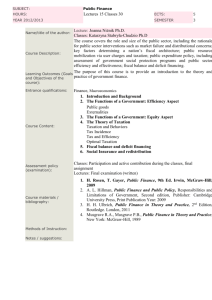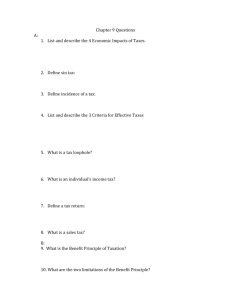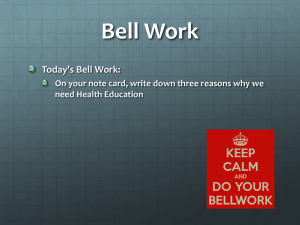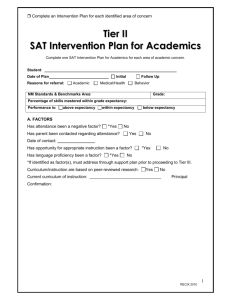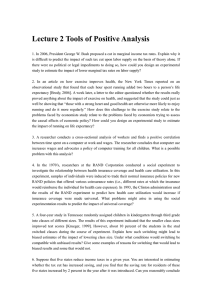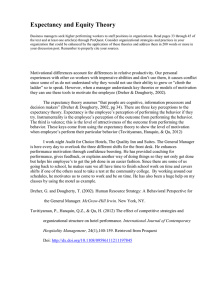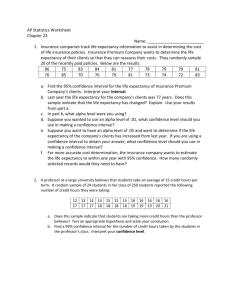Fiscal Policy (Ch 16) Quiz
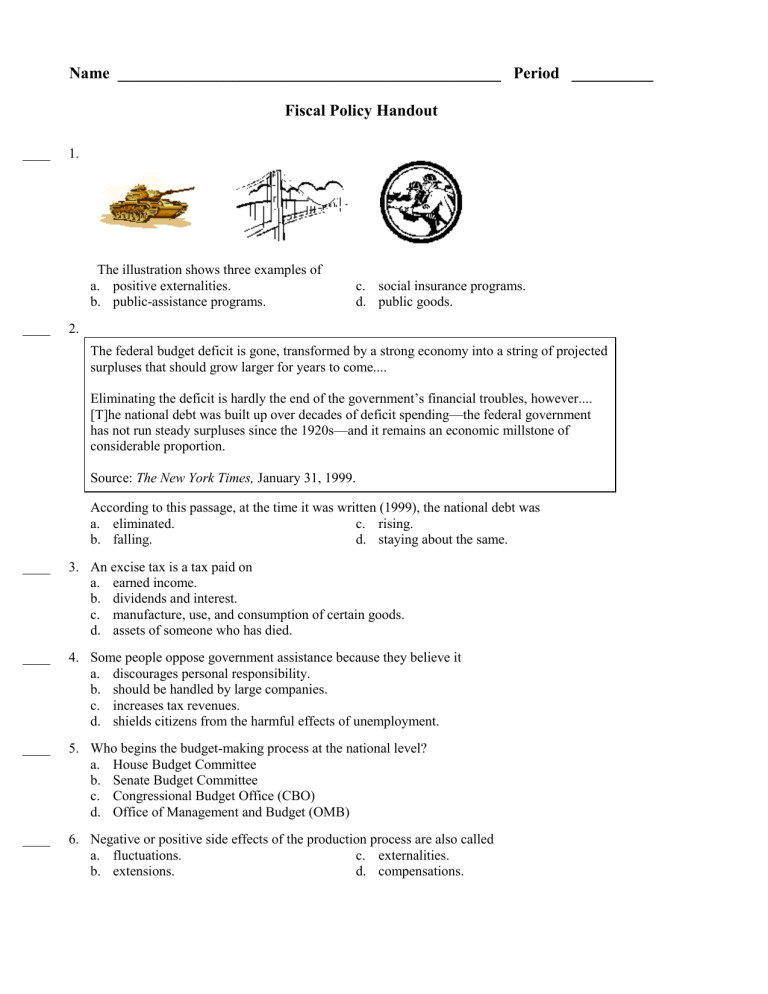
Name _______________________________________________ Period __________
Fiscal Policy Handout
____ 1. c. social insurance programs. d. public goods.
____ 2.
The illustration shows three examples of a. positive externalities. b. public-assistance programs.
The federal budget deficit is gone, transformed by a strong economy into a string of projected surpluses that should grow larger for years to come....
Eliminating the deficit is hardly the end of the government’s financial troubles, however....
[T]he national debt was built up over decades of deficit spending—the federal government has not run steady surpluses since the 1920s—and it remains an economic millstone of considerable proportion.
Source: The New York Times, January 31, 1999.
According to this passage, at the time it was written (1999), the national debt was a. eliminated. c. rising. b. falling. d. staying about the same.
____ 3. An excise tax is a tax paid on a. earned income. b. dividends and interest. c. manufacture, use, and consumption of certain goods. d. assets of someone who has died.
____ 4. Some people oppose government assistance because they believe it a. discourages personal responsibility. b. should be handled by large companies. c. increases tax revenues. d. shields citizens from the harmful effects of unemployment.
____ 5. Who begins the budget-making process at the national level? a. House Budget Committee b. Senate Budget Committee c. Congressional Budget Office (CBO) d. Office of Management and Budget (OMB)
____ 6. Negative or positive side effects of the production process are also called a. fluctuations. b. extensions. c. externalities. d. compensations.
____ 7. Since the end of World War II, the size of the U.S. government a. has remained about the same. b. has grown proportionally to the increase in the population. c. has grown much faster than the population. d. has not kept up with the increase in the population.
____ 8. Single parents in need of aid to raise their young children may qualify for a. public goods. b. Medicaid. c. Social Security. d. Temporary Assistance to Needy Families.
Back in 1940, when the Social Security program was just getting under way, average life expectancy was less than 64 years. The program’s designers expected that most people would contribute to the program most of their lives and die before collecting a dime in retirement benefits.... Today, average life expectancy in the United States is more than 75 years.... As life expectancy has soared, birthrates have declined, leaving fewer and fewer workers to support the ballooning number of retirees. In 1950, [the system] was solidly supported with
16 workers paying for each retiree; today, there are just over three workers per beneficiary.
Source: Carrie Lips, Cato Institute’s Project on Social Security Privatization.
____ 9. According to the passage, the increase in average life expectancy has created a problem for the Social
Security system because a. people are remaining in the workforce longer. b. more people are collecting retirement benefits for longer. c. younger workers are having a harder time finding jobs. d. people are retiring at a younger age.
Matching
Match each item with the correct statement below. a. workers' compensation f. benefits-received principle b. Social Security c. income redistribution g. public goods h. public-works projects d. fiscal year e. progressive tax i. budget surplus j. ability-to-pay principle
_____ 10. goods or services that government supplies to its citizens
_____ 11. government activity that takes income from some people through taxation and uses it to help citizens in need
_____ 12. year by which accounts are kept
_____ 13. federal program that provides monthly payments to people who are retired or unable to work
_____ 14. government program that extends payments for medical care to workers injured on the job
_____ 15. system of taxation in which those who use a particular government service support it with taxes in proportion to the benefit they receive
_____ 16. publicly used facilities built with public money by governments
_____ 17. situation that occurs when the amount of government receipts is larger than its expenditures
_____ 18. system of taxation in which those with higher incomes pay more taxes than those with lower income
